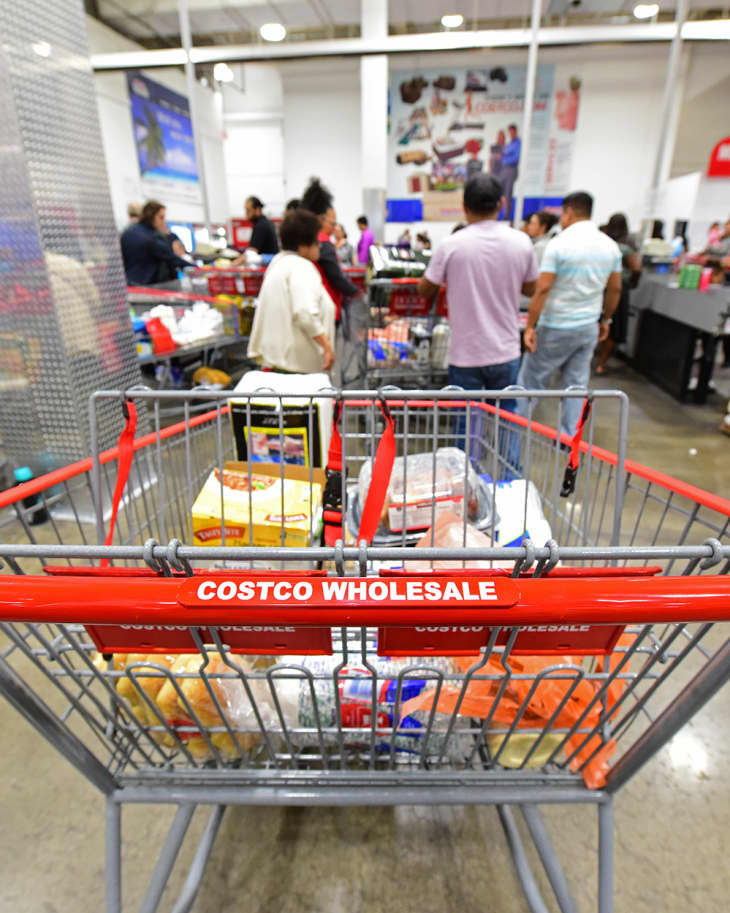6 Costco Price Codes You Should Memorize, According to an Expert Shopper
Costco’s aisles can often feel like navigating a deliciously deal-packed maze, to the point that it makes you wish someone would make a map on how to really maximize all the membership perks. While we’d love for that map to exist, what if we told you there was already a way to decipher these Costco price codes to save you even more dough? Well, it’s your lucky day because there are a few easy-to-remember tips on how to read the store’s price tags to reap even more benefits.
You might have already noticed that, at Costco, there are no red lines or special clearance tags, and no dedicated markdown section for shoppers to sift through. As it turns out, not all Costco pricing is created equal and the codes reveal a ton of crucial information — if a product will be restocked, whether it’ll be further reduced, and whether something is organic — in addition to if it’s on sale.
Before you think it, no we are not secret agents, but we did speak with the next-best thing: Marie Clark, editor of CostContessa, a shopping site focused on Costco and big-box retail. A stay-at-home mom who turned her love of Costco and its organic food deals into a business, Clark is an expert Costco shopper who blogs regularly about how to not just save pennies with a Costco membership, but also how to save big bucks by scouring price tags for extra pricing info. Here’s what she had to say.
1. Standard pricing ends in nine.
As you scan the aisles of Costco, you’ll likely see most prices end in the same number: nine. Essentially, this means this is the original, standard price of an item that hasn’t been further discounted yet. “It could end in .79, .89, or .29. It doesn’t matter — if it ends in a nine, it’s a regular price,” says Clark. But this doesn’t mean you’re not necessarily getting a deal, Clark reiterates: “It will generally be below retail price because Costco negotiates embedded discounts in its products, but for Costco it’s a full-priced item.”
2. An asterisk on a price tag means that item’s time is limited.
Fun fact: Costco employees and those who shop regularly at the store often refer to the asterisk as the “death star,” because it signifies that an item won’t be restocked. According to Clark, the asterisk is most commonly located in the upper right-hand corner, so it’s helpful to keep an eye out for this marker on a price tag, particularly when it comes to staple items you might want to stock up on. The asterisk alone doesn’t signify any discount, technically, but it will help you decide if you need to jump on an item that could be gone by your next trip, explains Clark.
3. Green tags mean an item is organic.
If you’re on the hunt for organic produce or meat and not sure where to look, go green — literally. According to Clark, white tags are placed on conventional food items, and green tags go on organic ones. The system isn’t foolproof, however. “Not 100 percent of Costco’s organic stuff gets flagged as organic,” she adds (see: this bag of organic peeled garlic, for example). “But they do try, and most of the organic items will have a green tag,” she says.
4. Sale items end in a double zero or seven.
While 007 means Bond in the rest of the world, in Costco, 007 means Sale. Big Sale. “If you see an item marked down and its price ends in .97 or in an even .00 (say, $5.00), then you know it’s on clearance,” Clark says. You might be asking, What’s the difference between items that end in seven and those that end in .00? “You tend to see the .00 price tags on clothing,” she explains, while the lucky sevens are often seen in other areas of the store.
5. Double eights and zeroes are manager markdowns.
See a .88 on a price tag? This, like the .00 and 7-pricings, is also a cue an item is on sale, but the eight means it’s a manager markdown. These lower prices are typically reserved for items that were returned, previous floor models, or slightly damaged (but still able to sell). It can also indicate an item of which there are just a few remaining in stock, and a manager wants to move inventory, too, meaning you can get a perfectly intact item for a steal.
Want to track some down? These markdowns will often be found on the perimeter of the store or at the end of an aisle. Just be sure to inspect your find carefully; sometimes these items are on sale because they have missing parts.
6. The bottom right of your price tag is worth checking, too.
Think an already discounted item won’t be further marked down? Think again. At the bottom right of an item’s price tag will be a date to keep an eye on. “That will tell you the last time the price tag was updated,” Clark says. If it’s been a while (say, a few weeks), and there’s no asterisk on the tag, there’s a good chance there’s a further reduction just around the corner.
Got a tip to add to this list? Tell us about it in the comments below.
